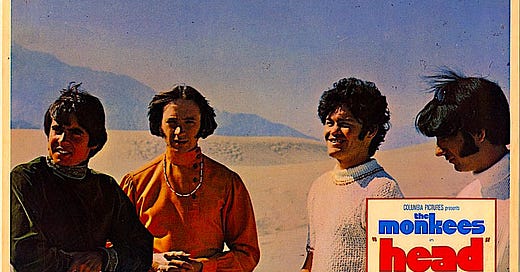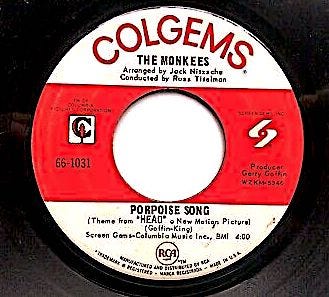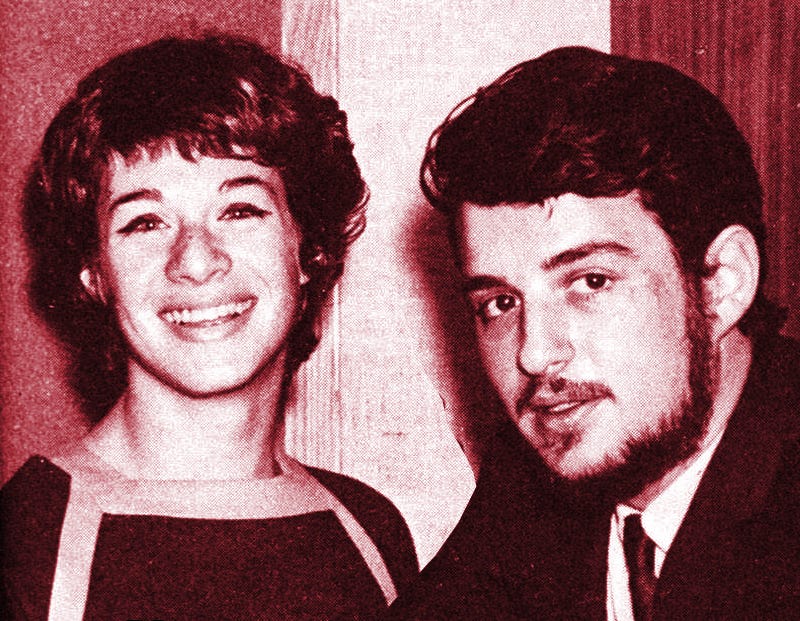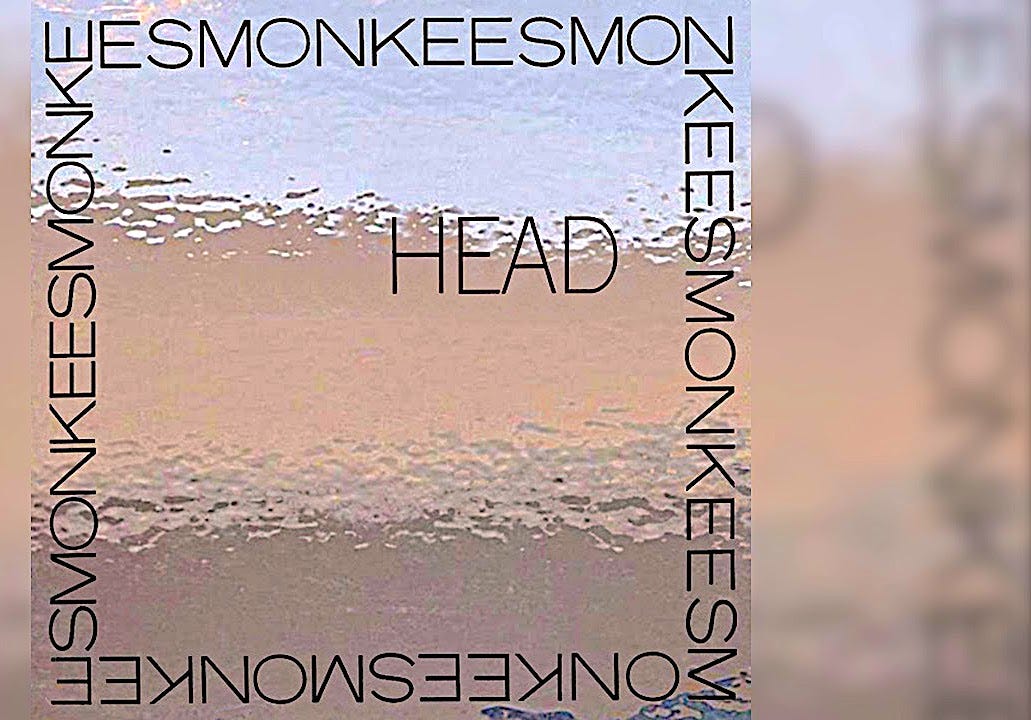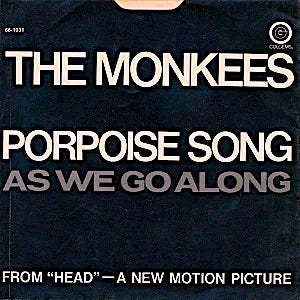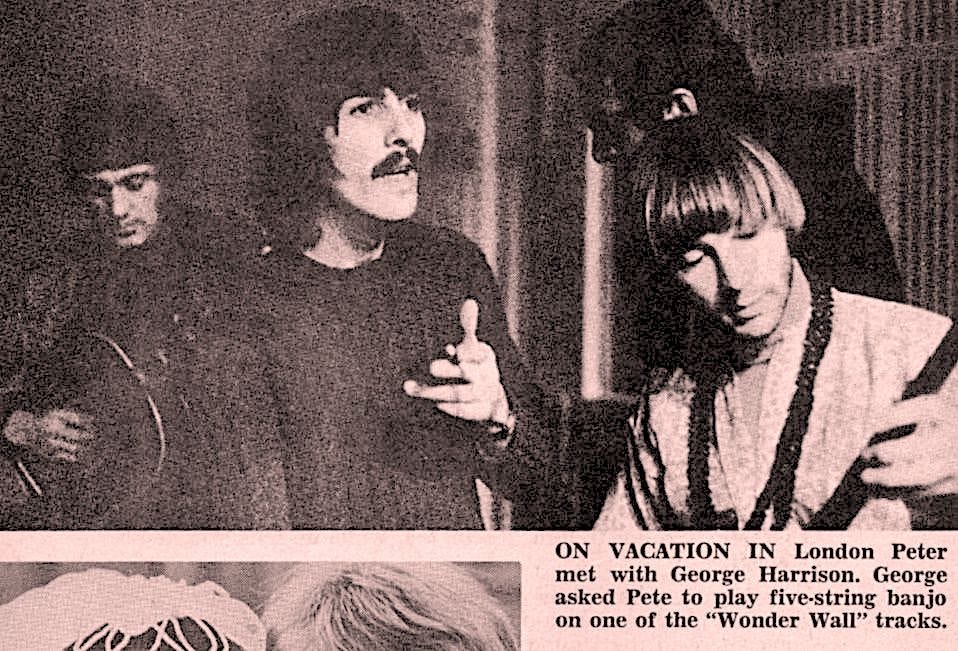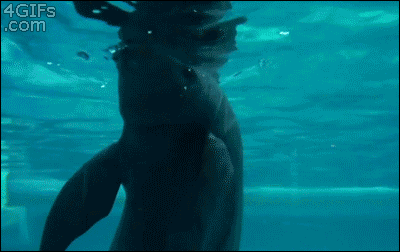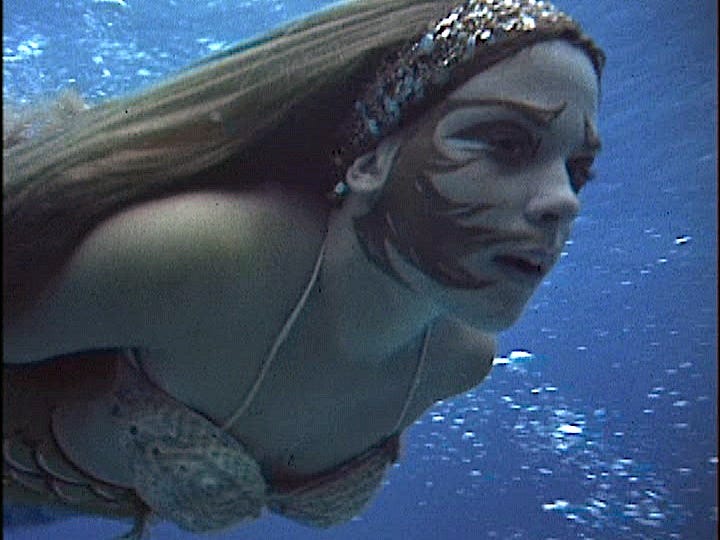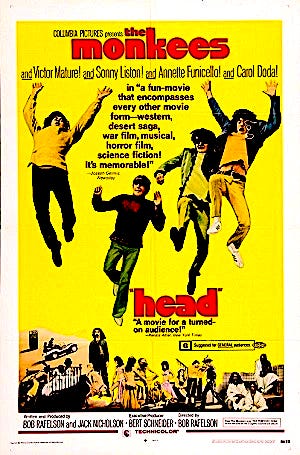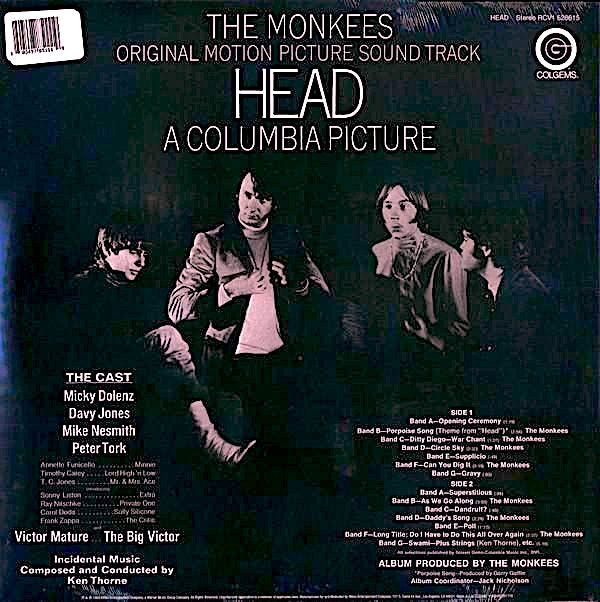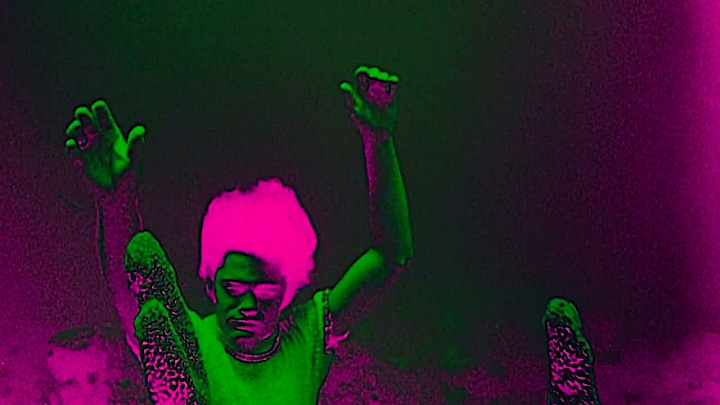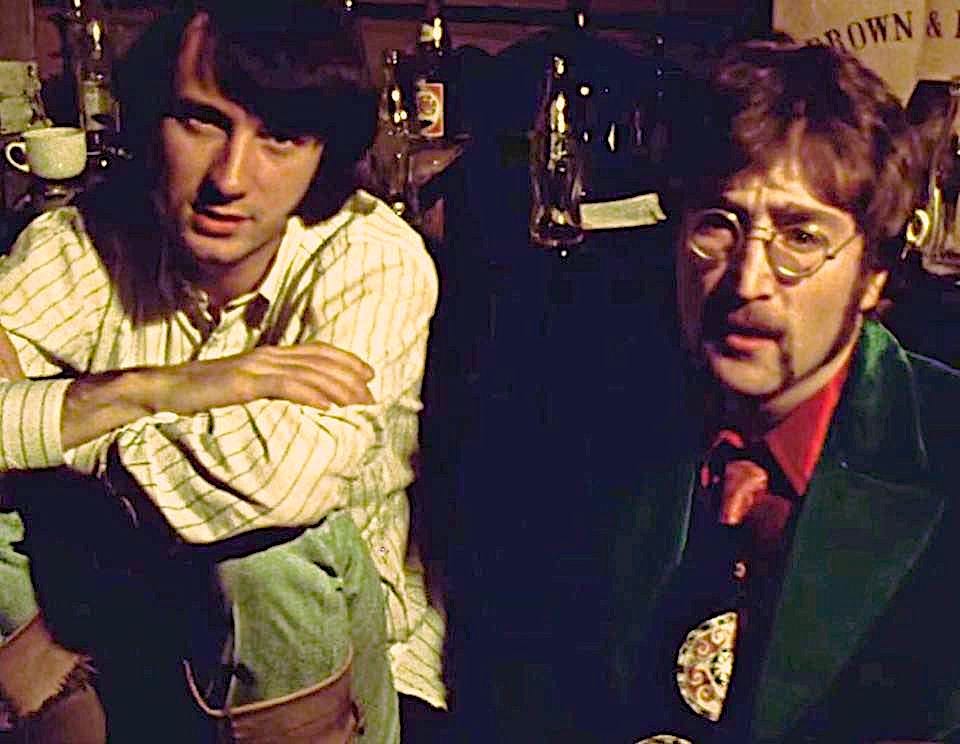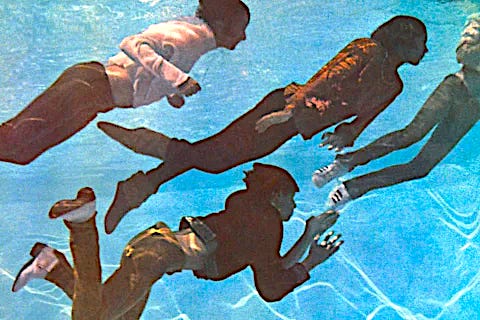SONGWRITER’S ANATOMY CLASS: “Porpoise Song” by The Monkees
...and how to decode their HEAD movie
SONGWRITER’S ANATOMY CLASS—STUDIES IN SONG CRAFT: “Porpoise Song” is a lesser-known Monkees track, issued in 1968 when the first cycle of The Monkees saga was on the decline. In the prior two years they’d conquered the world with an award-winning TV show, sell-out tours, abundant media exposure, phenomenal record sales, and a chart-busting string of Top 10 singles in the genres of bubblegum soul, country rock, and chamber pop. However, by those standards, “Porpoise” was a flop, peaking at #62. Today it’s hailed as a sonic touchstone of the times. It’s been reissued on countless psychedelic music anthologies, covered by over 12 artists, and prominently used in Tom Cruise’s trippy 2001 film “Vanilla Sky.”
Monkees historian Andrew Sandoval said, “Without a doubt...[“Porpoise” is their] most elaborate production...” Jack Nitzsche arranged the orchestration and Russ Titleman conducted with The Wrecking Crew, featuring Leon Russell in a wash of Procol Harum-ish organ. Davy Jones’s spectral harmony and Micky Dolenz’s strong lead vocals are high in the mix (this is an alternate mix, and the caption details the extraordinary number of musicians involved):
The lyrics call into question the order of the world and one's place therein, and there are veiled references to Micky’s childhood work as the star of the television series “Circus Boy.” The song was written by Carole King and Gerry Goffin, the hit-makers who were heavily involved in building The Monkees catalogue.
The ”Porpoise” single (longer than the edit-version used on the album soundtrack) was paired with “As We Go Along,” another Goffin/King gem from their late 60s phase of ornate chord patterns, transcendental themes, and unusual time signatures (also from this phase was “Wasn’t Born to Follow,” which Goffin/King first optioned to The Monkees but it was handed to The Byrds for the EASY RIDER soundtrack; The Monkees, featuring Peter Tork on banjo, finally cut their version on the 2016 GOOD TIMES album)
.
Porpoises are said to have intelligence on par with humans, but they are not bound by human systems. Appropriately, “Porpoise Song” bookends the film HEAD: At the start of the film, the group are being chased, running onto a bridge over a big harbor and interrupting a mayoral ceremony. To escape, Micky jumps from the bridge as the others look on in shock before leaping off to rescue him. As Micky sinks, he is saved by a couple of mermaids.
At the end of the film, the other members follow Micky again and jump or fall from the bridge. They appear to swim to shore but end up trapped in a large water tank, echoing what Davy Jones said to me many times, “The Monkees are like the Mafia. Once you’re in, you’re in.”
HEAD is the notoriously mind-bending film written by Bob Rafelson, Jack Nicholson, and (uncredited) The Monkees.
Rafelson co-created THE MONKEES TV show, and HEAD was his first film to direct and produce. He went became a prodigy of the New Hollywood, responsible for landmark films such as EASY RIDER, FIVE EASY PIECES, and others. However, HEAD, Rafelson’s big debut, tanked at the box office when released in 1968. Promotion was confusing and muted, and for fans the film went too far in dismantling The Monkees mythos. Those who did see it couldn’t decide if it was a kaleidoscopic stroke of genius, a big in-joke of the Hollywood underground, or a bunch of rich hippies on a weekend romp.
Only Rafelson could decode and explain HEAD, recalling, “Carole King was living in an apartment building on Sunset Boulevard, and I went to her apartment every day, and we would sit, and we would talk. [“Porpoise Song”] was critical to me. 'A face, a voice, an overdub has no choice.' In other words, the whole synthetic process of making Monkees records was about to be [examined] in the movie. They are constantly being picked up, used, transplanted, subjected to influence by the [guru], by the war, by the media, and all of these things are exposed. They are always [portrayed] as the victims of their own fame. That's what I chose to make the movie about.... It was Carole or Gerry's idea to record live porpoise sounds and use them on the track. That's what you hear [at the end of the song]...It is far and away my favorite Monkees's song.”
HEAD eventually found redemption via art movie houses (often paired with Frank Zappa’s 200 MOTELS) and late-night TV—which was how I saw it in 1977, and it reignited my interest in The Monkees. Today HEAD still provokes extreme love/hate responses from people, but Micky says he’s proud of it.
Some of the film’s techniques with solarization were ground-breaking and are oft imitated, and some say HEAD accomplished what The Beatles imagined in their ill-planned MAGICAL MYSTERY TOUR film. The Beatles esteemed The Monkees, and John Lennon called them “the rock’n’roll Marx Brothers,” if for The Monkees mix of comedy, music, and surrealism.
Cashbox magazine praised the “progressive feel” of “Porpoise Song” and compared it to “I Am The Walrus,” but the “Walrus” wordplay is a literary ramble (John Lennon as Lewis Carroll). By contrast, “Porpoise” is a hymn on the foibles of celebrity and humanity, foretelling “Fame,” the funky lamentation by David Bowie and Lennon. “Porpoise Song” could’ve come from Micky’s own head, likening porpoises to Monkees, four humans with a desire to swim freely.
King’s original demo began with a twist on Gregorian chants, but the final version dropped that in favor of a cello-driven impressionistic prelude. This segues into the Beatle-esque piano signature that drives the verses. The eerie “goodbye, goodbye” refrain compares with David Bowie’s early chamber pop, segueing into an oceanic crescendo of Pink Floyd-ian bravado.
I performed with The Monkees on their 2011 tour of the UK, Canada, and the USA. Our set included hits, deep cuts, and the entire HEAD soundtrack (excluding incidental music). Night after night, as much as I celebrate The Monkees songbook, I most looked forward to playing my bass and singing the songs from HEAD. We nearly replicated the studio version of “Porpoise,” adding concert thunder to it:
Peter Tork mimic’d porpoises with slide guitar while Wayne Avers’s lead added a Dave Gilmour flavor. On the 2021 Monkees tour (the last with Mike Nesmith), Micky stripped it down, just piano and vocal—proof that a great song works no matter how big or small the arrangement is.
I am often asked what my favorite Monkees song is, whether it’s one I performed with them or one I enjoy listening to. Without hesitation I answer, “Porpoise Song.”
#porpoisesong #monkees #mickydolenz #davyjones #petertork #michaelnesmith #caroleking #gerrygoffin #jacknitzsche #russtitleman #wreckingcrew #leonrussell #head #bobrafelson #johnnyjblair #psychedelic #vanillasky #pinkfloyd #procolharum

